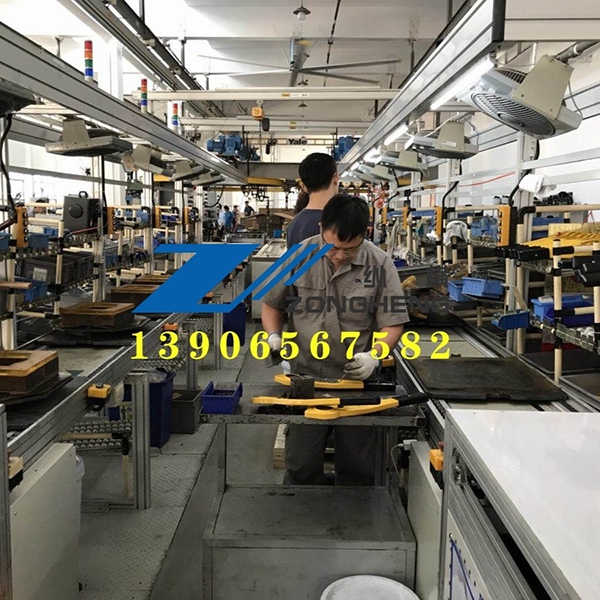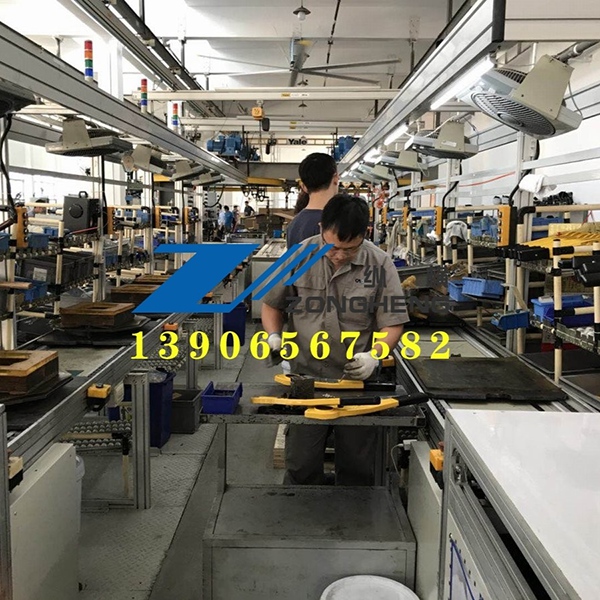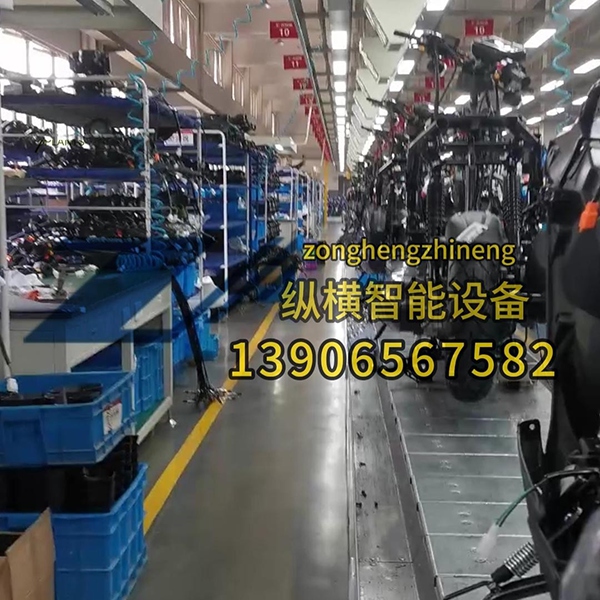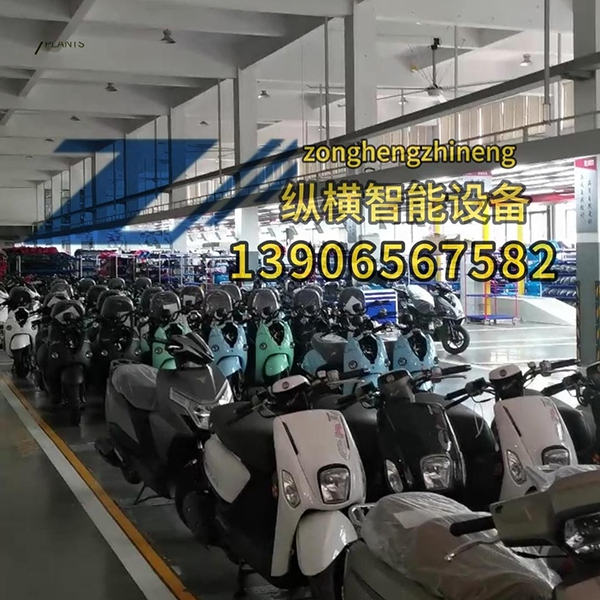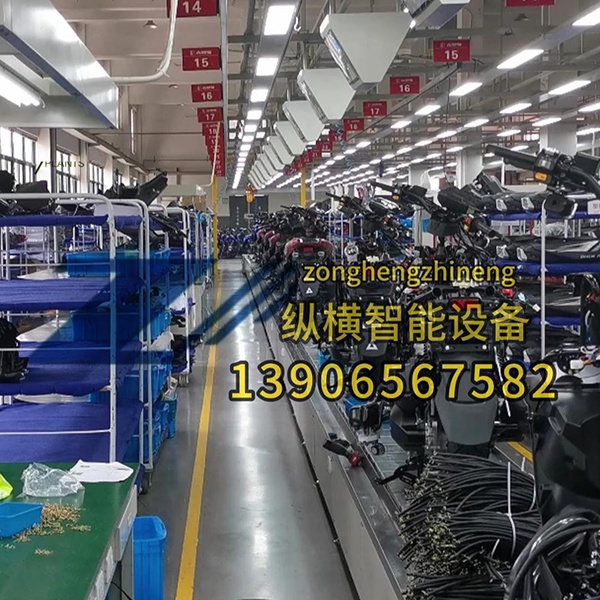Two Wheeled Motorcycle Assembly Line
Using DQ912 aluminum alloy profile as guide rail and triple speed chain as transmission medium, combined with electric and pneumatic control, the overall operation is in a relatively free rhythm state
Details
1. Assembly Line Composition and Process
Engine Assembly Line:
A movable pallet is provided for assembling the engine main body by mounting the specified parts on the crankcase and cylinder block placed on the pallet. The two-wheeled motorbike assembly line is assembled by mounting the specified parts on the cylinder head, which is supplied by the supply section located side by side at the specified position in the motorcycle assembly line and mounted on the engine body. A standby section is provided at the end position of the two-wheeled motorbike assembly line so that a specified number of cylinder heads assembled through the auxiliary assembly line can be put to use, and a specified number of cylinder head assemblies are aggregated and supplied to the supply section.
Complete Vehicle Assembly Line:
Taking the frame as the reference part, the engine, front fork, rear fork, front wheel, rear wheel, fuel tank, seat, handlebar, and other components are assembled on the frame to form a two-wheeled motorbike assembly line. The motorcycle assembly line process follows the order of “first down and then up, first inside and then outside, first difficult and then easy, first main (pieces) and then attached (pieces),” adhering to the sequence of “parts → components → parts or assemblies → complete vehicle.”
2. Quality Control Points
Parts Inspection:
motorcycle assembly line need to check the parts to be assembled in this process before assembly to ensure that there is no problem before proceeding. The inspection includes whether the parts are correct, whether the assembly is complete, whether the fasteners are in good condition, whether the appearance is acceptable, whether weldments are defect-free, and whether the position of the mounting holes is accurate.
Assembly Process Control:
motorcycle assembly line Use proper tools and gauges, keeping them neatly organized.
When assembling threaded joints, pay attention to the threading direction and tightening sequence to avoid damaging threads or deforming parts.
For rotating parts in the motorbike assembly line, ensure proper clearance between inclusive and included surfaces, apply lubricating grease, and test rotation by hand to confirm smooth operation without free movement.
For high-precision shaft-hole fits, use matching or repairing methods; for parts with strict sealing requirements, perform careful grinding.
Finished Product Inspection and Testing:
The assembled motorcycle undergoes thorough inspection and testing, including assembly integrity, fastener reliability, electrical functionality, adjustment compliance with design requirements, and performance meeting factory standards. Any non-conforming items must be repaired or readjusted before approval for factory release.
3. Production Type and Organization
Production Type:
Based on assembly lot size, production can be categorized into mass production, batch production, and single-piece small-batch production.
Mass production primarily uses the interchange method, allowing minimal adjustments, with finely divided processes following the principle of technological dispersion.
Batch production in the motorcycle assembly line falls between mass and small-lot production, ideally leaning toward mass production efficiency.
Organizational Form:
Depending on production type, labor requirements, and motorcycle model, assembly organization is divided into fixed and mobile assembly. Mass-produced motorcycles, including those in the two-wheeled motorbike assembly line, typically adopt forced mobile assembly for optimal efficiency.
